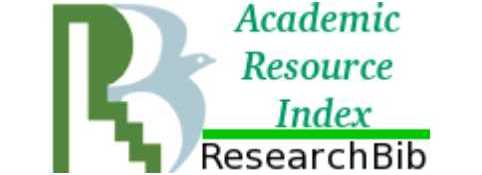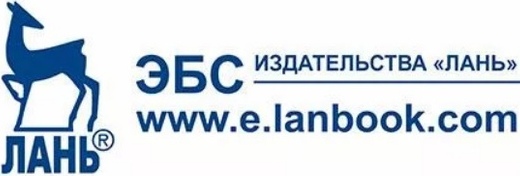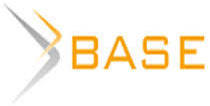ОБЕРЕГ ИЛИ КРЫЛЬЯ. КУЛЬТ ЛОШАДИ В ФЕРГАНСКОЙ ДОЛИНЕ
Aннотация
В статье исследуется культ лошади, взгляды людей на это удивительное существо, что является одной из основ народных верований. Акцент сделан на результатах анализа полевых материалов, собранных автором. Показано, что конь среди домашних животных занимает особое место, что синкретическая концепция лошади распространена очень широко. На это, в частности, указывают данные, полученные от коневодов, что очень важно для определения роли лошади в верованиях и ритуалах узбеков Ферганской долины. Предоставляется возможность познакомиться с последними полевыми материалами, которые обсуждаются впервые за несколько лет. Среди них информация о народных играх, связанных с лошадьми, о народных верованиях и приметах, а также о символическом значении цвета лошадей. Данные начала ХХ века сравниваются с новейшей информацией. Сделаны выводы о мировоззрении жителей Ферганской долины относительно лошадей и о мифологии лошади.
Ключевые слова: скотоводство, мировоззрение, религия, страж, демон, узбеки-лакаи, ферганская долина, ритуал, амулет, кобыла
К сожалению, текст статьи доступен только на Английском
Over the centuries, man has tamed many animals and used them as a source of food. Currently, these animals also have a special meaning in the daily lives of people. Pets play a large role in the worldview of the population (Snesarev, 1969: 308). Breeding of domestic animals such as cattle, sheep, horses, has become a separate industry. The population perceives livestock breeding as one of the main ways to meet the needs of the economy. Their value especially increases during various rites. In addition, it constitutes a separate category in a religious worldview (Ashirov, 2007: 9).
The study of the relationship between people and animals has always been the focus of researchers. The study of the mythology associated with animals (Jeang Lang, 1914; Mirzaev and Djuraev, 2001), the formation of the worldview (Emile Durkheim, 1995; Clifford Geertz, 1973; Sokolova, 1972; Kamad, 2006), their values in people's lives (Malozyomova, 2014; Tim Ingold, 1994; Sataev, 2016), the problems of religion and animals (William C. Chittick, 2009; Kristen Stilt, 2015; Hikhluha and Moshna, 2015; Myat Min and Cho Cho Zaw, 2016) are among the urgent scientific problems. Although the issue of animals in the outlook of the Uzbek people was studied by a number of scientists (Sprishevskiy, 1951; Potapov, 1958; Khaytun, 1958; Snesarev, 1969; Kharitonov, 2000; Ashirov, 2007; Bakhronova, 2018), this topic was not analyzed with the use of information from field materials and was not studied as a separate study.
Horses and sheep were considered the most common type of livestock (Potapov, 1958: 62). In cattle breeding, along with sheep breeding and cattle breeding, horse breeding was developed and a peculiar attitude to horses was formed (Agafonova, 1982: 15). As a result of the formation of such an attitude, the bond between man and horse was strengthened. Thanks to the properties of this animal, the belief in it was further strengthened in the outlook of people.
Horse breeding was fairly well developed in the foothill areas of the Fergana Valley, and among the population some beliefs associated with horses are well preserved. There are such proverbs and sayings as “The horse is the wing of a man” (Ashirov, 2007: 22), “The horse is an amulet”, “The horse is happiness”, “The horse is wealth”, which is a clear evidence of a special attitude to horses[1]. Such an attitude to horses is rooted in ancient religious beliefs (Avesto, 2001: 18).
Breeding horses has long been considered an occupation that was given special attention. It can be noted that at different stages of raising horses were named differently, just like sheep had their names by age. Determining the age of the horse and giving a certain name was carried out annually. As shown by a horse breeder from the village of Shirmanbulak, Bulakbashi district, Andijan region, Khalikulov Khorun[2], a newborn horse, was called Kulun, one-year-old Calta, two and three years old, Gunan, four-year-old Pushti, five years old, Asi, a six-year-old horse or mare. This determined the approach to caring for a horse. The need to determine the age of horses was important for their inclusion in the herd and selection of horse-makers, that is, stallions.
To determine the age of a horse on the market, experienced horse breeders pay attention to its teeth. No one will buy a horse if it has lost teeth. Such a horse is considered old and cannot be used either on the farm or in horse breeding. It is known that the average life expectancy of horses is 30 years. Experienced horse breeders testify that in their memory, with good care, horses lived 32 years. It is noted that long-lived horses can live up to 40 years. When determining the age of the horse in the market, they pay attention to the molars, which are popularly called “azu tish”. This tooth grows in horses from the age of five. In mares it grows up somewhat later. This feature was considered major in the distribution of horses in herds[3].
However, the appearance of the horse was also important in selecting horse producers and determining the price of a horse. People pay great attention to the appearance of horses. In addition, the color of the horse has long had a ritual character (Ashirov, 2007: 22). If some coat colours were considered benevolent, then some were not very welcome. The coat colour was also important in choosing a nickname for the horse. For example, a bay horse was called Dzhijran, white – buz, dappled – ol, and black was considered the most esteemed. The color of the mane also determined the value of the horse in the eyes of the people. It was believed that horses with a black mane and tail bring good luck. They were given special attention. Among the individual representatives of the population, a certain coat colour of horses was especially appreciated. In particular, among the Uzbeks-Lakaians, white horses were valued (Karmisheva, 1954: 80).
Among people there were peculiar beliefs about the habits of horses and people's attitude towards them. First of all, the horse was perceived as an animal loyal to its owner, and it was believed that it would never go far from its herd. The order in the herd was controlled by a stallion. If two herds were mixed, they selected their mares and returned them to the herd. They never take an unfamiliar mare into a herd. People believe that a mare that mates with a stallion in the spring, until autumn, until the horse breeder takes her to a separate stall, is in the herd under his protection and at his disposal. Stallions protect their mares and their foals from external threats and drive away predators. The loyalty of horses is clearly manifested in relationships within the herd.
According to the information of the experienced horse breeder Khalikulov Khorun ota[4], if 20 mares make up a herd, then one stallion is attached to them, which protects not only his herd, but also the herdsman. If the herder sleeps at night, from time to time the stallion bypasses and sniffs, and in case of danger, he wakes the herdsman up with a loud nicker. As the informer says, there is a saying: “The horse loves a man”. As on a pasture horses are always in sight of the herder and do not leave anywhere from the marked territory. It is also believed that the horse will protect its rider if wolves attack on the way.
All popular beliefs concerning horses imply a good attitude towards these animals. For example, it was impossible to beat the foals, because the horses have a good memory. It was believed that if a horse is treated badly while growing up, then a bad habit can form for its whole life. For example, it might have the habit of kicking or biting, which is associated with improper care. Like other animals, it was forbidden to beat horses in the face[5] (Ashirov, 2007: 23).
The choice of horse for riding was considered one of the most important issues. People think, a mare is suitable for everyone to ride. Since mares are calm by nature, riding them will not be a hassle even for novice riders. For ulak and other riding games, horses are selected according to their characteristics.
People believe that koumiss from horse milk prevents tuberculosis and keeps the body young. According to an informant from the village of Poloson, Altyarik District[6], to see a horse in a dream is means wealth. He notes that beliefs associated with seeing a horse in a dream are very widespread. Currently, some representatives of the population before some important matter, for example, before matchmaking, in order to find out whether it will be prosperous or stop it, read namaz “istigfar” at night and ask that they have a vision in their dreams. If you dream of a white horse, it is considered that the outcome of the planned undertaking will be successful.
In addition, there are still beliefs that some parts of a horse or harness bring good luck, protect against evil and the evil eye, and turn into reaches. In particular, it is believed that hanging horseshoes at the gate brings good luck and wealth to the house. Horse bridle is also considered a guardian (Ashirov, 2007: 23). While among Uzbeks a horse is considered to be a creature that protects from misfortune and the evil eye, it is perceived as a demon by the Tajiks (Karmisheva, 1954: 82).
The behavior of the horse can also warn of some danger. If mares in a stall kick and bite each other, it is believed that some kind of misfortune will occur[7].
In the view of Uzbeks there are beliefs associated with the horse at the birth of a child. If a child is born with hair, it is believed that he or she will be lucky. It is quite common to call sons “toy bola”, that is, “boy-foal” (Ismailov, 2014: 316). Today, there is a custom to give a horse for a wedding of young men. Until recently, it was customary to hang a cradle with a child decorated with amulets and a horse's mane[8]. While putting on a baby's shirt on the occasion of his 40-day of birth, in order for the horsepower to be transferred to him or her, a magical rite was performed, that is, at first it was put on the stake to which the horse was tied, and only then on the baby (Ashirov, 2007: 23).
Also, the saddle and bridle of the horse were considered to bring wealth and prosperity, and for this reason they did not pass to anyone. People strictly adhered to these rules. They also believed that the horse whip expels evil spirits, and therefore hung it at home. Among the shamans, even nowadays one can observe the use of a horse whip when driving out spirits from the human body[9].
In the memory of the inhabitants of the village of Shirmanbulak from games associated with horses, the game “battle of the lungs” has been preserved, which is not found elsewhere. This game was arranged at weddings. The lungs of the bull, stabbed before the wedding, were divided into two parts and given to the participants of the game. The competitors were supposed to knock each other off with their lungs. Currently such games are not played[10].
The second game associated with horses in this area is called “fighting on horseback”. At first, those who were fighting on horseback approached each other and held hands, and at the signal they began to fight. The first who was thrown off his horse was considered the loser[11]. According to people, games with horses were important not only from the point of view of recovery, but also as preparation for establishing understanding between people and horses. People believe, the horse moves with its rider and adapts to it. People consider a horse to be a man’s life companion.
There were also ceremonies associated with horses. One of them is called “davra solish”, i.e. literally “dump in a circle”. The essence of the ceremony is that the deceased was commemorated by throwing his clothes and accessories on his horse (Ashirov, 2007: 22). A long time ago the Turks were widely buried along with the horse.
Among horse breeders there was a special faith in the horse's spirit, which was considered Kambar ota (The list of nonmaterial cultural heritage of Uzbekistan, 2017: 48). In addition, there were holy places associated with horses. Basically, they are found with the names of saints or historical figures. For example, several mausoleums such as Dul Ata or Duldul Ata, “Poyi Duldul” are associated with the name of “Hazrat Ali” (Ashirov, 2007: 22-23). Shrines associated with the name Duldul are often found in the Fergana Valley (Abdulakhatov, 2008: 56).
The names of some lakes or places are also associated with horses. As an example, the legend of a foal, widespread among Lakaians, can be cited (Karmisheva, 1954: 82). According to the legend, the foal from one herd has disappeared in Green Lake. According to another version, one old man, passing by “Green Lake”, stopped for a prayer. His mare grazed nearby. Suddenly, a horse of the Tarlan breed came out of the lake and covered the mare with a wave. A year later, she gave the elder a beautiful foal. The foal grew so fast that it looked like a one-year-old in a month and looked like a two-year-old in two months. The news of it reached the ruler, and he bought it from the old man for a lot of money.
It can be noted that the ethnonyms of some Uzbek ethnic groups are also associated with the name of the horse. The Uzbek genus widespread in the mountainous regions of Gissar is called “Caltatay” (Karmisheva, 1972: 77). From toponyms it is possible to note a village with the name Yilkichi, i.e. “Herder” (Malikov, 2018: 57).
The ratio of Uzbeks to animals is clearly manifested in the care of pets. During this process, a person comes to the realization of a careful attitude to nature, a tender attitude to all living beings and not harming the natural chain. The trust of a person of his life to another being, the veneration of an animal is clearly seen in the example of a horse.
Today, honoring a horse, treating it as a companion of man, his guardian and animal, bringing wealth and good fortune, occupies a special place. It is important when performing rites. The horse, thanks to its loyalty and behavior, still remains an animal that occupies a special place in people's lives.
[1] Field works. (2018), Аndijanskaya oblast,Bulakbashinskiy rayon, seleniye Shirmanbulak,Mahmudov Pulatdjan, 1933 g. р. [Andijan region, Bulakbashi district, the village of Shirmanbulak, Makhmudov Pulatjan, born in 1933].
[2] Field works. (2018), Аndijanskaya oblast,Bulakbashinskiy rayon, seleniye Shirmanbulak,Kholiqulov Khorunbay,1928 g. р. [Andijan region, Bulakbashi district, the village of Shirmanbulak, Kholikulov Khorunboy, born in 1928].
[3] Field works. (2018), Аndijanskaya oblast,Bulakbashinskiy rayon, seleniye Shirmanbulak, KholiqulovAbdulladjan,1964 g. р. [Andijan region, Bulakbashi district, the village of Shirmanbulak, Kholikulov Abdulladjan, born in 1964].
[4] Field works. (2018), Аndijanskaya oblast,Bulakbashinskiy rayon, seleniye Shirmanbulak,Kholiqulov Khorunbay,1928 g. р. [Andijan region, Bulakbashi district, the village of Shirmanbulak, Kholikulov Khorunboy, born in 1928].
[5] Field works. (2018), Аndijanskaya oblast,Bulakbashinskiy rayon, seleniye Shirmanbulak,Isakov Akabay,1928 g. р. [Andijan region, Bulakbashi district, the village of Shirmanbulak, Isakov Akaboy, born in 1928].
[6] Field works. Ferganskaya oblast,Altiarikskiy rayon,seleniye Palasan,Madolimov Olimdjan, 1942 g. р. [Fergana region, Altyaryk district, the village of Palasan, Madolymov Olimjan, born in 1942].
[7] Field works. (2018), Аndijanskaya oblast,Bulakbashinskiy rayon, seleniye Shirmanbulak,Kholiqulov Khorunbay,1928 g. р. [Andijan region, Bulakbashi district, the village of Shirmanbulak, Kholikulov Khorunboy, born in 1928].
[8] Ibid.
[9] Field works. (2018), Аndijanskaya oblast,Bulakbashinskiy rayon, seleniye Shirmanbulak,Suleymanov Ibrakhimdjan,1940 g. р. [Andijan region, Bulakbashi district, the village of Shirmanbulak, Suleymanov Ibrokhimdjan, born in 1940].
[10] Field works. (2018), Аndijanskaya oblast,Bulakbashinskiy rayon, seleniye Shirmanbulak,Mamaturdiyev Kurbandjan,1933 g. р. [Andijan region, Bulakbashi district, the village of Shirmanbulak, Mamaturdiey Kurbandjan, born in 1933].
[11] Field works. (2018), Аndijanskaya oblast,Bulakbashinskiy rayon, seleniye Shirmanbulak,Kholiqulov Khorunbay,1928 g. р. [Andijan region, Bulakbashi district, the village of Shirmanbulak, Kholikulov Khorunboy, born in 1928].

















Список литературы
Абдулаҳатов, Н.У. Фарғона водийси аҳолиси турмуш тарзида зиёратнинг ўрни. Тошкент, 2008. 304 б.
Авесто: Яшт китоби / М. Исҳоқов таржимаси. Тошкент: «Шарқ», 2001. 126 б.
Агафонова, Г.А. О чем рассказывают наскальные рисунки. Фрунзе: «Кыргызстан», 1982. 24 с.
Аширов, А. Ўзбек халқининг қадимий эътиқод ва маросимлари. Ташкент: «Алишер Навоий номидаги Ўзбекистон Миллий кутубхонаси нашриёти», 2007. 276 б.
Бахронова, Д.К. Антропозоморфизмларнинг лингвокультурологик хусусиятлари. Тошкент: «Fan va texnologiya», 2018. 100 б.
Камад, И. Обрядовая сторона культов Древней Греции. М.: Институт общегуманитарных исследований, 2006. 67 с.
Кармышева, Б.Х. Очерки этнической истории Южных районов Таджикистана и Узбекистана. М.: Наука, 1972. 324 с.
Кармышева, Б.Х. Узбеки-локайцы Южного Таджикистана., Сталинабад: Издательство Академии наук Таджикиской ССР, 1954. 171 с.
Маликов, А.М. Тюркские этнонимы и этнотопонимы долины Зарафшана. Ташкент: «Муҳаррир нашриёти», 2018. 216 с.
Малозёмова, Е.И. Образы животных в оформлении иранского холодного оружия. Электронная библиотека Музея антропологии и этнографии им. Петра Великого (Кунсткамера) РАН [Электронный ресурс] URL: http://lib.kunstkamera.ru/files/lib/978-5-88431-271-5/978-5-88431-271-5_11.pdf (дата обращения: 04.04.2019)
Мирзаев, Т., Жўраев, М. “Авесто” мифологияси ва ўзбек халқ оғзаки ижоди. (Ўзбекистон тарихи журнали) Т.: ЎзР ФА “Фан”, 2001. № 3. 22-46 б.
Потапов, Л.П. Волк в старинных народных поверьях и приметах узбеков // Краткие сообщения (института этнографии имени Миклухо-Маклая). М.: Издательство Академии Наук СССР, 1958. С. 135-142.
Потапов, Л.П. Очерки по истории алтайцев. М.; Л.: Издательство Академии Наук СССР, 1953. 444 с.
Сатаев, Р. Животные в культуре Древней Маргияны. М., 2016. 196 с.
Снесарев, Г.П. Реликты домусульманских верований и обрядов у узбеков Хорезма. М.: Наука, 1969. 338 с.
Соколова, З. Культ животних в религиях. М.: Наука, 1972. 215 с.
Спришевский, В.И. Погребение с конем середины I тысячелетия н. э. обнаруженное около обсерватории Улугбека // Труды Музея история народов Узбекистана. Т. 1. Ташент: 1951. С. 33-42.
Ўзбекистон номоддий маданий мероси рўйхати. UNESCO ishlari bo’yicha O’zbekiston Respublikasi milliy komissiyasi. Tошкент: «Hilol Nashr», 2016. 72 б.
Хайтун, Д.Е. Тотемизм его сущность и происхождение. Сталинабад, 1958. 150 с.
Харитонов, М.А. Образ волка в социокультурной традиции народов Центральной Азии: Дис. ... канд. истор. наук. Улан-Удэ, 2000. 186 с.
Хихлуха, В., Мошна, Н. Зарождение древнеегипетской религии. Ранние верования // ГЫЛЫМИ-КЕ ЖУРНАЛ. OЛКЕТАНУ № 3-4, 2015. C. 53-57.
Durkheim, E. The Elementary Forms of the Religious Life. New York: «The Free Press», 1995. 464 р.
Geertz, C. The Interpretation of Cultures. New York. «Basic Books», 1973. 470 р.
Ingold, T. What is an Animal? London and New York. «Routledge», 1994. 191 р.
Ismailov, A. Totemic foundations of the Uzbek anthroponomy. Motif Akademi Halkbilimi Dergisi / 2014-2 (Temmuz-Aralık). Pp. 313-320.
Jeang Lang. A book of Myths. New York, «G. P. Putnam’s sons», 1914. 340 р.
Myat Min, Cho Cho Zaw. ANIMAL care: An islamic perspective with particular reference to unwanted pets – stray dogs and cats. International Journal of Business, Economics and Law, Vol. 9, Issue 5 (Apr.) 2016. Pp. 153-165.
Stilt, K. Animal Welfare in Islamic Law. «Northwestern University of Chicago», 2015. 48 р.
William, C. Chittick. Journal of the Muhyiddin Ibnʻ Arabi Society, Vol. 46, 2009. Pp. 27-37.